-
Viewpoint on 'IONS'
Viewpoint on 'Scientific Literacy'
- Proudly sponsored by
-


-
Light's Ring-around-the-rosey
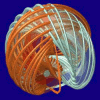
Can light travel only in straight lines? A new kind of light beam that travels along circles may soon provide an interesting twist to this question.
-
Holography Goes Beyond 3D
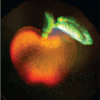
Holography is an inherently 3D technology that now supports full color. It could, therefore, provide the ultimate 3D experience, with images and movies appearing identical to the real world… and without the need for 3D glasses.
-
Flat Light from a Flat Diamond
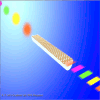
The possibility to polarize light in optical fibers comes to establish graphene as a likely key player in the future of optical technologies; a new application emerges for this material that rocked the scientific world due to its fascinating properties.
Updating the Size of the Proton:
Small Difference, Big Consequence
The proton is one of the building blocks of matter and now latest studies suggest it is considerably smaller than previously measured. This is a result that may well challenge our current understanding of nature.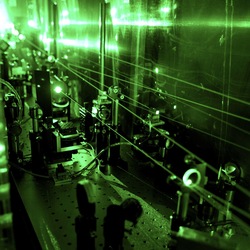
Laser spectroscopy to see the proton size. A complex laser system is needed to perform the muonic hydrogen experiment. The picture shows frequency doubling optics transforming infrared to green light. Photo: PSI / A. Antognini, F. Reiser.
The generally accepted value of 0.8768 femtometers (one femtometer is one millionth billionth of a meter) for the radius of the proton was found by studying the hydrogen atom. This value is known with an accuracy better than 1%, but the newly measured value of 0.84184 femtometers amounts to a difference of 4%. Coming from a high-precision experiment, this is far beyond experimental or statistical errors and may therefore have far-reaching implications. After all, the accuracy with which the proton radius is known is currently the limiting factor in experiments testing the most accurate physical models.
Scientists often turn to the hydrogen atom in fundamental studies of matter because it is the simplest atom being constituted of only one proton and one electron. The energy with which the electron is bound to the proton is called the electron binding energy. This energy is found to be quantized, which means that it only takes certain discrete values. A model based on quantized energy levels, Niels Bohr's empirical atomic model, was already proposed back in 1913-1914.
An important consequence of this quantization is that the atom will absorb and emit light of very specific electromagnetic frequencies. Thus, the study of such frequencies, known as atomic spectroscopy, has soon become a powerful tool to test the theoretical description of matter.
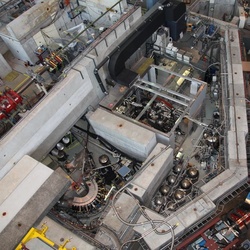
Huge lab to measure tiny proton. Top view of the laboratory, the accelerator hall, at Paul Scherrer Institute. The proton experiment is in the lower left corner, where we see the curved muon extraction channel, which transports the muon beam from the cyclotron trap to the target. Picture: T.W. Hänsch.
In 1947, spectroscopic experiments of the hydrogen atom showed a subtle difference between two binding energies, which, according to relativistic theory, should be the same. This effect is called the Lamb shift and plays an important role in the determination of the proton radius.
Randolf Pohl from the Max-Planck Institute of Quantum Optics in Garching (Germany), who has been working on this experiment for over ten years explains, "The tiny mass of the electron turns out to be a limiting factor in the accuracy of hydrogen spectroscopy measurements. Therefore, people have started considering to replace the hydrogen's electron by the essentially identical but much heavier muon. For muonic hydrogen, we knew that, in principle, it would be possible to measure the proton radius a lot more accurately."
Technically speaking, the muon's greater mass leads to a far smaller Bohr radius of muonic hydrogen than conventional, electronic hydrogen. By measuring the muonic Lamb shift, a higher accuracy when measuring the proton radius is obtained. However, such experiments are tremendously complex and rely on advanced technological and experimental developments. This is why they have only recently became possible. Today, one of the few systems in the world capable of producing the required muon beams is located at the PSI.
In 2003, the first experiment in to muonic Lamb Shift was believed to be a failure because it did not confirm the generally accepted proton radius. However, the new experiment with even higher-accuracy has now confirmed these findings. "Today," Pohl says, "we are finally certain that our experiment is reliable and we therefore think that we should start checking all other possible origins of this discrepancy."
"This experiment shows that there is something going on that we do not understand," Krzysztof Pachucki from the University of Warsaw (Poland) comments. Pachucki has been working on the muonic Lamb shift [1] and QED for most of his career and believes that these results might even help advance the fields. "Of course," he explains, "the simplest answer to explain the discrepancy between the measured proton radii is to still assume experimental errors. However, I also believe that the new measurements are too accurate and too different to leave room for this claim."
"There is still a lot to be learned about the proton and the other subatomic particles," Pohl emphasizes, "and in the end, we will probably see that we need to learn more about the internal structure of protons and how they interact with electrons and muons."
Pohl is therefore looking forward to the planned experiments on muonic helium by the same researchers. "For me," Pohl concludes, "the most fascinating aspect of this research is that, once again, we see how much we can get caught by surprise; just when we think that we already know it all!"
[1] Krzysztof Pachucki, Theory of the Lamb shift in muonic hydrogen, Phys. Rev. A 53, 2092-2100 (1996).
Armand Niederberger
2010 © Optics & Photonics Focus
AN is currently working on his PhD on disordered ultracold quantum systems at ICFO - The Institute of Photonic Sciences in Barcelona (Spain).

Randolf Pohl, Aldo Antognini, François Nez, Fernando D. Amaro, François Biraben, João M. R. Cardoso, Daniel S. Covita, Andreas Dax, Satish Dhawan, Luis M. P. Fernandes, Adolf Giesen, Thomas Graf, Theodor W. Hänsch, Paul Indelicato, Lucile Julien, Cheng-Yang Kao, Paul Knowles, Eric-Olivier Le Bigot, Yi-Wei Liu, José A. M. Lopes, Livia Ludhova, Cristina M. B. Monteiro, Françoise Mulhauser, Tobias Nebel, Paul Rabinowitz, Joaquim M. F. dos Santos, Lukas A. Schaller, Karsten Schuhmann, Catherine Schwob, David Taqqu, João F. C. A. Veloso & Franz Kottmann, The size of the proton, Nature (2010) 466, 213-216 (link).